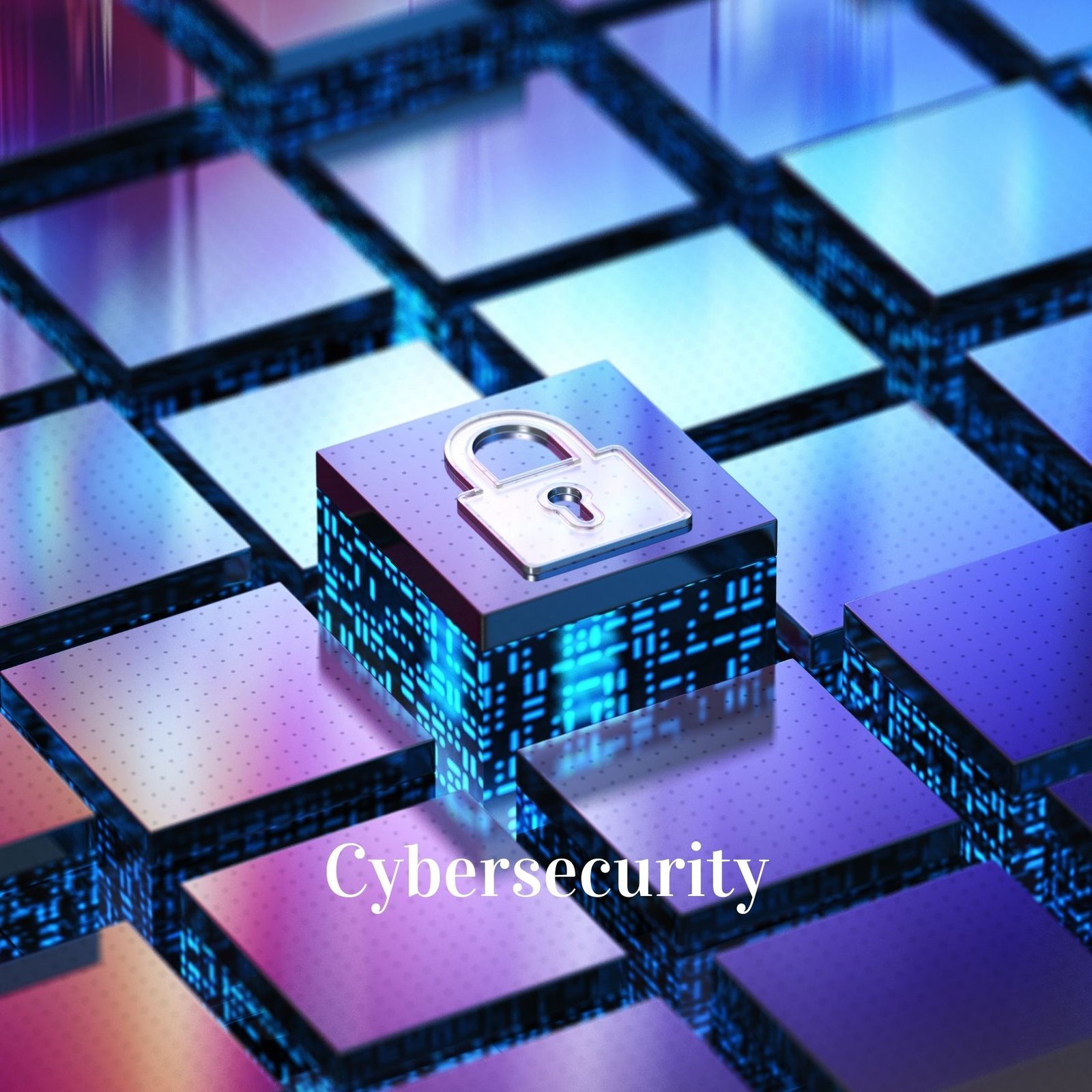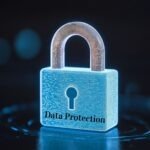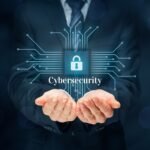Table of Contents
Let’s face it—our digital lives are more exposed than ever. From online shopping and banking to sharing selfies and opinions on social media, we constantly leave behind a digital footprint. And if you’re not careful, that trail can lead cybercriminals right to your personal data. But don’t worry. You don’t have to be a tech wizard to stay safe online. Just developing a few solid cybersecurity habits can keep you protected. So, let’s dive into the top 10 cybersecurity habits every internet user should adopt today.
1. Use Strong and Unique Passwords
Why Strong Passwords Matter
Ever use “123456” or “password” as your login? You’re not alone, but it’s a massive security risk. Weak passwords are like leaving your front door wide open—inviting anyone to walk in. Hackers use automated tools that can crack simple passwords in seconds. And if you reuse the same password across multiple sites, a breach on one platform can compromise all your accounts. Yikes.
A strong password acts like a digital vault. It’s your first line of defense against unauthorized access. Think of it like locking your house with a deadbolt instead of just a latch.
How to Create Strong Passwords
Crafting strong passwords doesn’t have to be rocket science. Just follow these basic principles:
- Length matters: Aim for at least 12–16 characters.
- Mix it up: Use uppercase and lowercase letters, numbers, and symbols.
- Avoid personal info: Steer clear of names, birthdays, or pet names.
- No dictionary words: Common words are easier to guess using brute-force attacks.
Here’s a simple method: Take a sentence like, “My dog Charlie was born in 2017!” and convert it to “MdCwbi2017!”. It’s unique, memorable (to you), and hard to crack.
Tools to Manage Your Passwords
Remembering dozens of unique passwords? No thanks. That’s where password managers come in handy. Tools like LastPass, Bitwarden, or 1Password can store and auto-fill your passwords securely. Some even generate strong passwords for you.
And one golden rule: Never write passwords down—especially not on sticky notes near your computer. That’s like writing your ATM PIN on your debit card.
2. Enable Two-Factor Authentication (2FA)
What is Two-Factor Authentication?
2FA is like adding an extra lock on your digital doors. It requires two pieces of evidence to verify your identity—something you know (password) and something you have (a phone, fingerprint, or security token). Even if someone nabs your password, they still need the second factor to get in.
Think of it like a double-check. If you use online banking, you’ve likely encountered it when you get a code sent to your phone after logging in.
How 2FA Enhances Security
Here’s why it’s a game changer: Most breaches today stem from stolen passwords. But with 2FA enabled, a hacker would need physical access to your second factor—usually a mobile device or authentication app. This drastically cuts down the chances of unauthorized access.
And it’s not just for email or banks. Platforms like Facebook, Instagram, Google, Amazon, and even gaming services like Steam and PlayStation Network offer 2FA options.
Best Practices for Using 2FA
- Use an Authenticator App: Instead of SMS (which can be hijacked via SIM swap), use apps like Google Authenticator, Authy, or Microsoft Authenticator.
- Secure Backup Codes: Many platforms provide backup codes in case you lose access to your device. Store these codes offline in a secure place.
- Set It Up Everywhere: Wherever it’s available—enable it. Don’t skip it just because it’s a bit inconvenient.
A few extra seconds during login are worth the security peace of mind.
3. Keep Software and Devices Updated
The Importance of Updates
You’ve probably clicked “Remind me later” on a software update, right? We all have. But those updates often contain critical security patches. When you delay updates, you’re leaving known vulnerabilities wide open for hackers to exploit.
Cybercriminals love unpatched systems. Remember the infamous WannaCry ransomware attack? It targeted outdated Windows systems and spread like wildfire.
Automating Software Updates
The easiest way to stay safe? Turn on automatic updates. Whether it’s your operating system, browser, or mobile apps—let them update in the background.
- Windows/Mac: Enable system auto-updates.
- Phones: Both iOS and Android allow auto-updating of apps.
- Browsers: Chrome, Firefox, Edge, and Safari push frequent updates—don’t skip them.
Even better, delete unused apps entirely. Fewer apps = fewer vulnerabilities.
Prioritizing Security Patches
Sometimes, companies release “emergency” patches for newly discovered exploits (zero-day vulnerabilities). Don’t delay these. Follow tech news or subscribe to update alerts for your OS or software suite.
And don’t forget routers, smart TVs, or IoT devices. These often fly under the radar but can be huge attack surfaces. Log in to your device settings and check for firmware updates regularly.
4. Be Wary of Phishing Scams
Common Phishing Tactics
Phishing is cybercrime 101. Scammers send fake emails or texts pretending to be trusted organizations—banks, Amazon, Netflix, or even your boss. Their goal? Trick you into clicking malicious links or giving up personal info.
The most common types of phishing include:
- Email phishing: Fake emails with urgent messages like “Your account is locked!”
- Spear phishing: Personalized scams targeting specific individuals.
- Smishing and vishing: Phishing via SMS and voice calls.
These scams are getting scarily realistic—with logos, convincing language, and even spoofed sender addresses.
How to Recognize a Phishing Attempt
Here’s how to spot a phish:
- Check the sender’s email address. Slight misspellings are a red flag.
- Hover over links. If the URL looks suspicious, don’t click.
- Watch for urgency. Phrases like “Act now!” or “Immediate action required” are classic tricks.
- Poor grammar or odd phrasing can signal a scam.
When in doubt, don’t engage. Contact the organization directly through their official website.
Steps to Take if You Fall for a Scam
Oops—you clicked a shady link or entered your info. Don’t panic. Take immediate action:
- Change your passwords—especially if you use the same one elsewhere.
- Enable 2FA on all your accounts.
- Report the scam to your email provider or national cybercrime authority.
- Run a malware scan using your antivirus software.
And most importantly, learn from it. Even the savviest users can slip up.
5. Use a Reputable Antivirus and Anti-Malware Tool
How Antivirus Software Works
Think of antivirus as your digital guard dog. It scans your files and behavior for known threats—like viruses, ransomware, spyware, and trojans—and blocks them before they cause damage.
These tools work in real-time and are constantly updated to tackle the latest threats.
Choosing the Right Security Suite
Not all antivirus programs are created equal. Here’s what to look for:
- Real-time protection: Stops threats as they appear.
- Frequent updates: Ensures you’re protected against new malware.
- Lightweight performance: Doesn’t slow down your device.
- Extra features: Firewalls, phishing protection, parental controls, etc.
Top-rated options include Norton 360, Bitdefender, Kaspersky, Malwarebytes, and Windows Defender (which comes built-in on Windows 10 and 11 and is actually quite solid these days).
Complementary Tools for Better Protection
Even with antivirus, no tool is 100%. It’s smart to layer your defense:
- Use a firewall.
- Run periodic full-system scans.
- Consider browser security extensions like uBlock Origin or HTTPS Everywhere.
- Scan USB drives before opening them.
Staying safe online is about building layers—like wearing a seatbelt and having airbags.
6. Secure Your Wi-Fi Network
Dangers of an Unsecured Network
Your home Wi-Fi is the gateway to all your connected devices—phones, laptops, TVs, smart home gadgets, and more. If it’s not secured properly, hackers can sneak in, spy on your online activity, and even steal personal information. You wouldn’t leave your front door unlocked, right? Then don’t leave your Wi-Fi open either.
An unsecured network can be hijacked to spread malware, steal data, or even use your internet connection for illegal activities. Plus, freeloaders can slow down your bandwidth and make your connection unreliable.
Tips for Securing Your Home Network
- Change default settings: Routers come with generic usernames and passwords—change them immediately.
- Set a strong Wi-Fi password: Like your online accounts, your network needs a tough-to-crack password.
- Use WPA3 or WPA2 encryption: This ensures data transmitted over your network is scrambled and hard to intercept.
- Rename your SSID: Avoid using names that give away personal info, like “JohnsHomeWiFi.”
- Disable WPS and UPnP: These features might be convenient but can create vulnerabilities.
Advanced Router Settings for Better Protection
If you’re tech-savvy, take it a step further:
- Create a guest network: Keep visitors off your main network.
- Enable MAC address filtering: Only allow devices you trust to connect.
- Turn off remote access: Prevent others from logging into your router from the internet.
- Update your router firmware: Just like your devices, routers need security updates too.
A secure Wi-Fi network is the foundation of your digital safety at home.
7. Limit Personal Information Shared Online
Why Oversharing Is Risky
Social media is fun—but it’s also a goldmine for cybercriminals. Every detail you share—your birthdate, pet’s name, vacation plans—can be used to guess passwords, answer security questions, or tailor phishing scams just for you.
Even your location can be a red flag. Posting that you’re on vacation alerts burglars that your home is empty. Oversharing can also lead to identity theft or cyberstalking.
Safe Sharing Practices
Here’s how to protect your privacy:
- Keep profiles private: Set your social accounts so only friends can see your posts.
- Avoid tagging your location: Wait until you’re back home to post those vacation pics.
- Think before you post: Would you share this info with a stranger in real life?
- Be cautious with friend requests: Only accept people you actually know.
Review Your Digital Footprint
Do a quick Google search of your name. Surprised by what pops up? Old forum posts, photos, or personal info might still be floating around. Clean up your digital footprint by:
- Deleting unused accounts.
- Removing old posts or comments.
- Requesting removal of outdated search results where possible.
Remember, the internet never forgets—so post wisely.
8. Use Secure and Encrypted Websites
Understanding HTTPS vs HTTP
Have you ever noticed the little padlock icon in your browser’s address bar? That’s HTTPS in action—it means the website is using encryption to secure the data you send and receive.
Sites with just HTTP transmit data in plain text, which hackers can intercept. When shopping, logging in, or entering personal info, always look for that padlock icon and the https:// prefix.
Why It Matters for Online Transactions
Imagine entering your credit card info on a non-secure site. That info could easily be snatched by cyber snoops. Encrypted sites protect your:
- Login credentials
- Financial data
- Messages or personal details
Even Google gives HTTPS sites a small SEO boost—and marks non-secure pages as “Not Secure” to warn users.
Browser Extensions That Help
Some tools can force HTTPS on sites that support it:
- HTTPS Everywhere (by EFF): Automatically switches sites from HTTP to HTTPS.
- Privacy Badger: Blocks trackers and helps protect your browsing behavior.
- DuckDuckGo Privacy Essentials: Adds encryption and tracker blocking in one extension.
Bottom line? If a site isn’t secure, it’s not worth the risk—especially if you’re sharing sensitive info.
9. Log Out of Accounts When Not in Use
Why Logging Out Matters
Leaving yourself logged in is like leaving your house with the keys still in the door. If someone gets access to your device—even briefly—they could snoop, post on your behalf, or change your settings.
This is especially risky on:
- Public computers (like in libraries or schools)
- Shared devices at home
- Borrowed laptops or tablets
Auto-logins are convenient, but they’re also dangerous if your device falls into the wrong hands.
Best Practices for Safe Logouts
- Always log out from banking, email, and social accounts after use.
- Don’t rely on closing the tab or app. That doesn’t always end your session.
- Clear your browser cache and cookies if you’re using a public or shared device.
- Disable auto-fill for passwords on devices you don’t own.
And if you’ve left an account logged in on another device, most platforms now allow you to log out remotely through their security settings.
Use Auto-Logout Features
Many websites and apps have inactivity timers that log you out automatically. Enable these when possible—it’s a simple way to protect your account when you forget.
10. Educate Yourself and Stay Updated
Cybersecurity Is Always Evolving
The digital world changes fast. New threats emerge daily, and staying informed is crucial. You don’t need to be a tech genius—but being aware of the latest scams, tactics, and safety tips makes a huge difference.
Knowledge is power, and in cybersecurity, it’s also your best shield.
Where to Learn About Online Safety
Stay informed through:
- Tech blogs like Krebs on Security, Wired, or The Hacker News.
- Official sources like the Federal Trade Commission (FTC) or your national cybersecurity center.
- YouTube channels and podcasts focused on digital safety.
- Free online courses from sites like Coursera or Khan Academy.
Make it a habit to check these sources monthly. Even 10 minutes can keep you ahead of the curve.
Teach Others Around You
Share what you learn. Help your family, friends, or coworkers understand the basics. Set up their 2FA, install antivirus, or show them how to spot phishing. Cybersecurity is a team sport—the more people around you who are informed, the safer you all are.
Conclusion
You don’t need to be a tech expert to stay safe online. In fact, just a handful of good habits—like using strong passwords, enabling two-factor authentication, keeping your software up-to-date, and watching out for phishing—can make a world of difference. Cybersecurity isn’t just for businesses or IT departments anymore. It’s a personal responsibility, and it starts with the little choices we make every day.
Think of it like brushing your teeth. One time won’t save your smile, but consistency will. The same goes for online safety. These ten habits, if practiced regularly, can protect your personal data, keep your accounts safe, and give you peace of mind as you browse, work, and connect in the digital world.
And hey, it’s okay if you’re just starting out. The important thing is to start. Pick one habit, nail it, then move on to the next. Over time, these will become second nature—and you’ll be a whole lot safer online.









